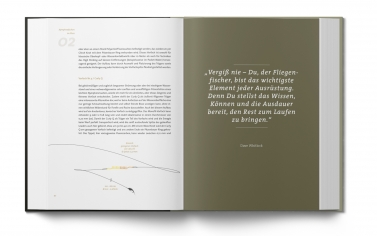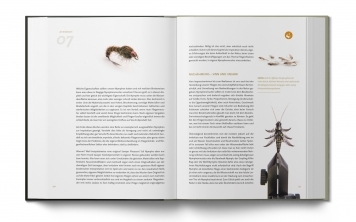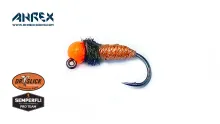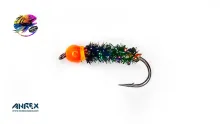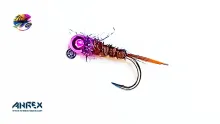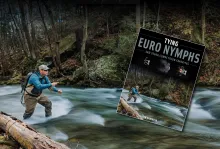My heart beats for specialty books rather than general ones, and a large book solely on nymphing is definitely something that stirs my interest. Even a German language one.
Updated or edited 10 months ago
I have reviewed German books before. Germany is a large country with large flyfishing community, and of course also a large market for books and magazines. Germany is also the second largest country when it comes to GFF visitor nationalities, only surpassed by the US.
I am also lucky enough to belong to a generation who was taught German in school, which means that I can read most German texts and even make myself somewhat understood in a slightly broken German.
So I have my eyes out
for German language literature as well as English, and when something interesting appears, I try to get my hands on it and review it.
This particular book
triggered my interest for several reasons. First of all it was mentioned several times by the authors on Facebook, and the page and image samples they posted looked top notch. Secondly the subject was sufficiently narrow to make me interested. My heart beats for specialty books rather than general ones, and a large book solely on nymphing is definitely something that stirs my interest.
375 pages on nymphing offers a lot of room to cover the field, and the book doesn't disappoint when it comes to in-depth coverage of a wide range of subjects within the discipline. Nymphing might be considered a specialized way of fishing, but after having read this book, it's pretty obvious that nymphing is much more than just drifting a weighted fly down a stream under an indicator.
It suitably starts off with a chapter on the history of nymphing, covering masters such as Skues, Saywer and Leisenring as well as more contemporary representatives in the form of Oliver Edwards and Roman Moser.
The main part of book
is the following three parts on fishing streams, fishing stillwaters and fishing for non-salmonids. The last fifth or so of the book deals with nymph fly-tying.
The sections covering the fishing methods dwell on the different techniques in thorough, well written and not least well illustrated chapters. No stone is unturned, and you will probably find one or two techniques and nymph rigs that you haven't seen described in detail before. The section on stream fishing goes particularly into detail with modern nymph leaders, and covers the many and sometimes complex rigs that are used in modern nymphing. Not only are the traditional methods covered, but the still more popular European high sticking with stretched line, Czech and French nymphing and other methods are described in depth.
The book has three German main authors,
but also contains contributions from a large number of other capacities. This becomes quite obvious in the section on lake fishing, where well known UK anglers help covering the many ways a fly or a team of flies can be rigged and fished from bank or boat. The UK traditions on nymphing might seem difficult to understand and master to the outsider, but the book does a very decent job of clearing up a lot of the confusion.
The guest contributions are spread out through the book, and offer personal and insightful breaks, some short, some long, some in the form of interviews, some more like personal experiences with the subject at hand.
The last section is called “Imitation” and is about designing and tying nymphs. As well as the fly tying it also covers the most commonly imitated naturals and even the hatches during the seasons.
It also lists a large number of nymph patterns and will give you enough inspiration and specific materials listings for many hours of tying.
As already mentioned
this is 375 pages about something that many anglers will consider a fairly narrow subject. Many general fly fishers may fear that this could lead to a monotonous reading experience with many repetitions. That is absolutely not the case. Even with this many pages between your hands, you sometimes feel that the authors have been sitting on even more details, more great photos and more illustrations, but due to the physical limits of the book, compromises have probably had to be made. Mind you, I'm not missing anything specific, but more details on things such as the Leisenring lift, Tenkara, coiled or “slinky” indicators (here called Curly Q indicators) and other subjects wouldn't have made the book worse.
The technical side of the book
– layout, format, print – is exquisite and definitely top notch. I'm not a big fan of the white text on dark green used in the guest entries, but they are easy to read and of course makes these pages stand out. The photo selection is more than excellent and there's plenty of pictures. The illustrations made by Veit Dresmann are world class: clear and consistent, handling the chore of showing thin lines and small flies without making the drawings overly schematic.
Altogether the book is about as good as they come, and for fly anglers reading German, this is something obvious to add to the Christmas wish list. Priced at 40 Euros or about 45 US$ it delivers a lot of pages for the money, and will provide lots of knowledge and inspiration for new as well as seasoned nymph anglers.
- Log in to post comments


